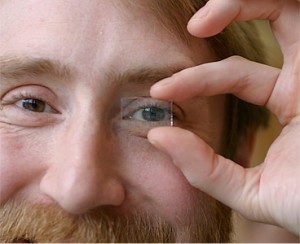If a new development from labs at MIT pans out as expected, someday the entire surface area of a building’s windows could be used to generate electricity — without interfering with the ability to see through them.
The key technology is a photovoltaic cell based on organic molecules, which harnesses the energy of infrared light while allowing visible light to pass through. Coated onto a pane of standard window glass, it could provide power for lights and other devices, and would lower installation costs by taking advantage of existing window structures.

These days, anywhere from half to two-thirds of the cost of a traditional, thin-film solar-power system comes from those installation costs, and up to half of the cost of the panels themselves is for the glass and structural parts, said Vladimir Bulović, professor of electrical engineering in the Department of Electrical Engineering and Computer Science. But the transparent photovoltaic system he developed with Richard Lunt, a postdoctoral researcher in the Research Laboratory of Electronics, could eliminate many of those associated costs, they say.
Using the window surfaces of existing buildings could provide much more surface area for solar power than traditional solar panels, Bulović says. In mornings and evenings, with the sun low in the sky, the sides of big-city buildings are brightly illuminated, he says, and that vertical “footprint” of potential light-harvesting area could produce a significant amount of power.
(in photo: Richard Lunt, one of the researchers who developed the new transparent solar cell, demonstrates its transparency using a prototype cell)
